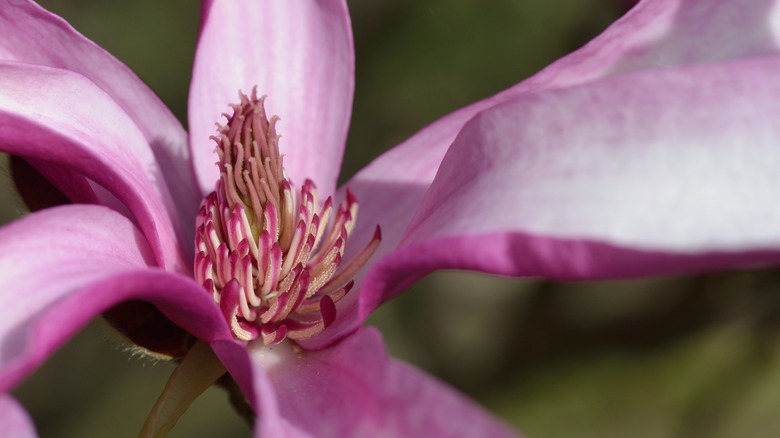The Gorgeous Magnolia Tree You'll Want To Grow In Your Pollinator Garden
A good pollinator garden needs a variety of flowers, grasses, trees and more to attract a wide range of insects and promote healthy biodiversity. When planning your pollinator garden, it's important to keep this balance in mind, but that doesn't mean you always have to choose between planting more showy, colorful flowers or lush, shady trees. With the Ann magnolia hybrid, you can have it all! Magnolia trees in general are very attractive for pollinators, but an Ann magnolia could be the perfect pink and purple magnolia tree variety you'll want to plant for beautiful blooms. Bees, butterflies, and moths will flock to the Ann's vibrant flowers, and a later blooming time allows it to draw in even more hungry pollinators ahead of the summer season.
The Ann magnolia could be your key to enjoying vibrant blooms, bees, butterflies for years to come. Plus, the Ann is a rare breath of fresh air for gardeners coping with cooler climates. Here's why you should consider the Ann magnolia for your next pollinator garden show-stopper, more information about this special tree, and tips for helping it thrive in your garden.
Ann magnolia flaunts beautiful blooms
First created by the U.S. National Arboretum in the 1950s, the Ann magnolia, or magnolia Ann tree, is a hybrid species formed by crossing two other magnolia types: Magnolia liliiflora and Magnolia stellata. Ann is just one in a series of "little girl" magnolias, with other hybrid sisters including the Jane, Betty, Judy, Susan and more. The Ann magnolia, specifically, comes from Magnolia liliiflora "Nigra" and Magnolia stellata "Waterlily". The Ann magnolia can thrive in USDA zones 4 through 8 and grows to be about 8 to 10 feet tall when mature — much smaller than its popular cousin, the Southern Magnolia.
Ann magnolia is an excellent choice for pollinator gardens because it produces hundreds of bright tulip-shaped blooms in spring. The Ann magnolia blooms a little later than its parent types, with vibrant reddish purple flowers that have a sweet and fruity yet subtle fragrance that is irresistible to pollinators but won't overwhelm your yard or your nostrils. The flowers tend to emerge before any leaves, boasting a showy solid pink canopy that looks similar to a cherry blossom tree.
Ann is an easygoing magnolia hybrid
Gardeners rejoice; Ann is a gorgeous magnolia tree variety that's easy to take care of, and unlike some other magnolia varieties, the Ann can tolerate cooler climates. In fact, a brief but cold winter snap will allow the tree to enter dormancy and encourage it to produce even more bright blooms come spring. Still, the Ann magnolia fares best in relatively mild climates, and can be damaged by extreme winter frost or summer heat. The Ann magnolia needs full sun to partial shade, and will produce its best blooms when grown in a bright, sunny location. Moist, well-draining soil with a neutral or slightly acidic pH is best.
Given the proper protection when young, this tree won't require much maintenance or gardener intervention once established, and is generally drought-tolerant. Pruning the tree isn't necessary, but can be done to help the plant stay shapely and compact like a shrub. Prune gently to avoid snipping off the coming season's blooms. Considering the Ann's preference for slightly acidic soil, you might wonder, can fertilizing your magnolia tree with coffee grounds help it bloom? Used and dried coffee grounds can lower the soil pH and provide vital nutrients like nitrogen and potassium, but you can also apply a slow-releasing organic fertilizer in early spring before blooms emerge. Proper nutrients and frequent watering also increase the odds of your Ann re-blooming in summer.


